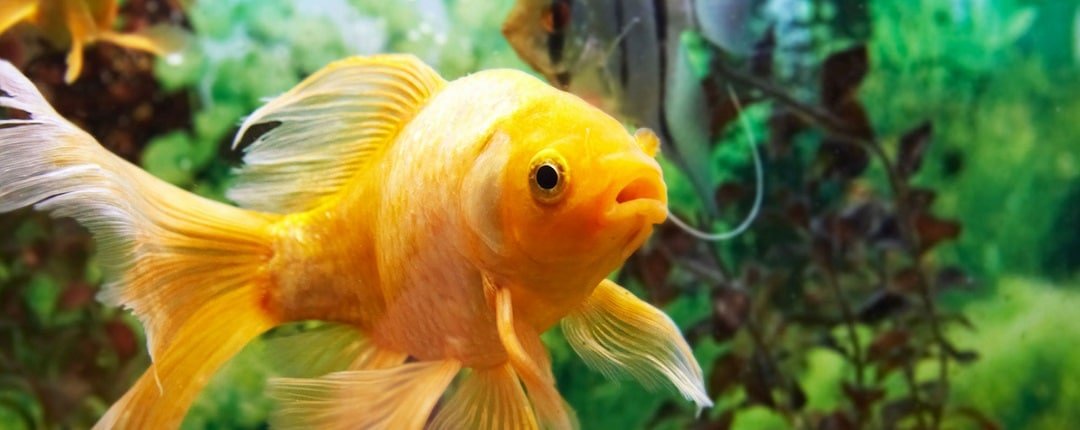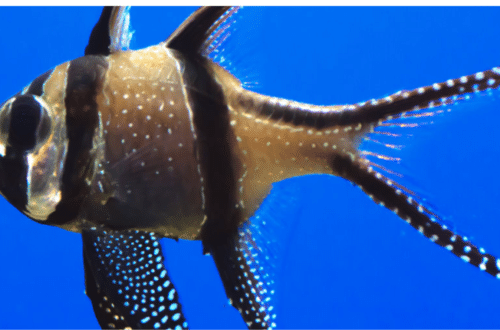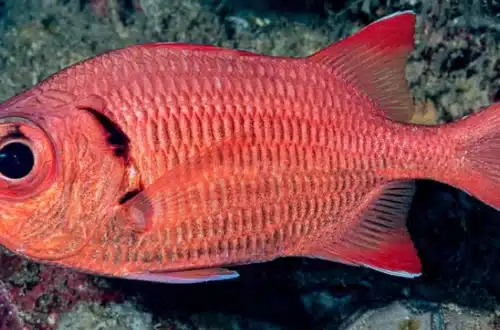The mesmerizing dance of colorful fish and the calming gurgle of water in an aquarium can transform a room into a tranquil haven. But beyond the aesthetic beauty lies a responsibility: ensuring the well-being of your aquatic companions. Fear not, aspiring aquarists! This comprehensive guide equips you with the knowledge and tools to navigate the exciting world of fish care and create a thriving underwater paradise for your fin-tastic friends.
Building an Aquatic Oasis: Setting Up Your Tank
Choosing the right tank is the foundation of a healthy aquarium. Consider these factors:
- Size: Opt for a tank that accommodates your desired fish species and provides ample swimming space. Research the adult size of your chosen fish to avoid overcrowding.
- Filtration: Invest in a reliable filtration system to keep water clean and remove harmful toxins. Choose a filter appropriate for your tank size and fish load.
- Substrate: Natural gravel or sand provides a comfortable base for your fish and helps maintain healthy bacteria. Live plants can also be added for additional filtration and aesthetic appeal.
- Decoration: Rocks, driftwood, and aquatic plants enrich the environment and offer hiding spots for your fish. Opt for aquarium-safe decorations to avoid releasing harmful chemicals.
The Magic of Water: Understanding Water Quality
Maintaining optimal water quality is crucial for your fish’s health. Here are key aspects to consider:
- Temperature: Different fish species have specific temperature preferences. Use a thermometer to monitor temperature and adjust it accordingly.
- pH level: The pH level measures the acidity or alkalinity of water. Research the ideal pH range for your fish and use testing kits to monitor and adjust it if necessary.
- Ammonia and nitrites: These harmful byproducts of fish waste can be fatal if not controlled. Regular water changes and a good filtration system are essential for keeping them at safe levels.
Feeding Frenzy: Nourishing Your Fish
Proper nutrition is vital for your fish’s growth, health, and vibrant color. Choose a high-quality diet based on their specific needs:
- Flake food: A staple for most fish, offering a variety of nutrients. Choose flakes appropriate for your fish size.
- Pellets: Dense and nutritious, ideal for larger fish or bottom feeders.
- Live or frozen food: A natural treat rich in protein, but introduce it in moderation to avoid overfeeding.
- Vegetables: Blanched lettuce, cucumber, and zucchini offer essential vitamins and fiber.
Read more about Feathered Friends: Your Guide to Bird Care for Happy and Healthy Flockmates
Sharing the Underwater Kingdom: Fish Compatibility
Not all fish are meant to be tank buddies. Research compatibility before introducing new fish to your existing community. Consider factors like:
- Temperament: Some fish are aggressive and may attack others. Choose fish with similar temperaments to avoid territorial conflicts.
- Size and fin nipping: Larger fish can bully smaller ones, and some species are known for fin nipping. Ensure your fish can coexist peacefully.
- Schooling and social behavior: Some fish thrive in groups, while others prefer solitude. Choose compatible companions to meet their social needs.

Common Challenges and Solutions: Keeping Your Fish Healthy
Even the most devoted aquarists encounter challenges. Here are some common issues and how to address them:
- Fish diseases: Observe your fish for unusual behavior, changes in appearance, or lethargy. Consult your veterinarian or experienced aquarist for diagnosis and treatment.
- Algae growth: Excess algae can be unsightly and harmful. Control it through regular water changes, proper lighting, and algae-eating fish.
- Water parameter fluctuations: Sudden changes in temperature, pH, or other water parameters can stress your fish. Adjust them slowly and maintain a stable environment.
Beyond the Basics: Resources for Aquatic Enthusiasts
The world of fish care is vast and ever-evolving. Embrace the learning journey and explore these valuable resources:
- Books and online resources: Stay updated on the latest advancements and find species-specific information through reliable sources.
- Aquarist forums and communities: Connect with other fish enthusiasts, share experiences, and ask questions for support and advice.
- Local fish stores: Seek guidance from knowledgeable staff and participate in workshops or events.
- Veterinarians specializing in aquatic animals: Consult a qualified fish vet for professional advice on diagnosing and treating fish diseases.
Read more about Dog Care: Your Ultimate Guide to Raising a Happy and Healthy Pup
Aquascaping: Creating a Stunning Underwater Landscape
Aquascaping isn’t just about decoration; it’s about creating a visually appealing and functional environment for your fish. Here are some tips for crafting a stunning underwater masterpiece:
- Planning and layout: Sketch your design beforehand, considering the placement of rocks, driftwood, and plants to maximize space and create natural hiding spots.
- Substrates and rocks: Choose natural gravel or sand in colors that complement your overall theme. Rocks can add visual interest and provide surfaces for beneficial algae growth.
- Planting for purpose: Include fast-growing plants for initial filtration and background cover, followed by slower-growing, colorful foreground plants. Research plant compatibility and light requirements.
- The golden ratio: Use the golden ratio (1:1.618) for a balanced and pleasing layout. Create focal points with dramatic rocks or plant groupings and leave open spaces for swimming.
- Maintenance and trimming: Regularly trim plants to maintain their shape and prevent them from blocking light. Remove dead leaves and debris to keep the water clean and prevent algae growth.
Bringing Your Aquarium to Life: Technology and Innovation
Technology can enhance your aquarium experience and make fish care easier. Consider these options:
- Aquarium controllers: Monitor and adjust water parameters like temperature, pH, and lighting automatically.
- Smart feeders: Set feeding schedules to ensure your fish receive the right amount of food at the right time.
- Wavemakers and powerheads: Create natural water movement for a healthy ecosystem and prevent stagnant areas.
- UV sterilizers: Kill harmful bacteria and parasites in your water for additional disease prevention.
- Aquarium LED lights: Choose LED lights with adjustable settings to simulate natural daylight and promote plant growth.

Building a Community: Connecting with Other Aquarists
Sharing your passion for fish with others can enrich your experience and provide valuable support. Here are some ways to connect:
- Local aquarium clubs and societies: Attend meetings, workshops, and events to learn from experienced aquarists and showcase your own creations.
- Online forums and communities: Share pictures and stories, ask questions, and get advice from fellow fish enthusiasts around the world.
- Volunteer at aquariums or conservation organizations: Give back to the aquatic world and learn from professionals.
- Participate in aquascaping competitions: Challenge yourself and showcase your skills in a creative and rewarding way.
Read more about Cat Car Seat: Your Guide to Safe and Happy Feline Road Trips
Conclusion:
Fish care goes beyond simply filling a tank and throwing in some food. It’s a journey of create a thriving underwater ecosystem where your fin-tastic friends can flourish. By providing them with a suitable environment, optimal water quality, proper nutrition, and compatible companions, you’ll witness the magic of a healthy and vibrant aquarium. Embrace the challenge, dive into the knowledge, and create an oasis of shimmering scales and captivating underwater life. Happy fishkeeping!
Read more about: soportguru.pro
FAQ of Fish care:
- What is the best fish for beginners? Choose hardy, peaceful species like guppies, tetras, or danios. Research their specific needs before bringing them home.
- How often should I clean my fish tank? Perform partial water changes weekly, removing 10–25% of the water. Clean the gravel and decorations periodically, depending on the tank size and fish load.
- How can I tell if my fish is sick? Look for changes in behavior like lethargy, loss of appetite, unusual swimming patterns, or changes in appearance (fin rot, cloudy eyes).
- Can I mix freshwater and saltwater fish? No, these two types of fish have different water requirements and cannot coexist in the same tank.
- What plants are safe for my fish? Choose live plants specifically designated for aquariums. Avoid plants that may be toxic to fish or release harmful chemicals.
Read more about: guiterly






